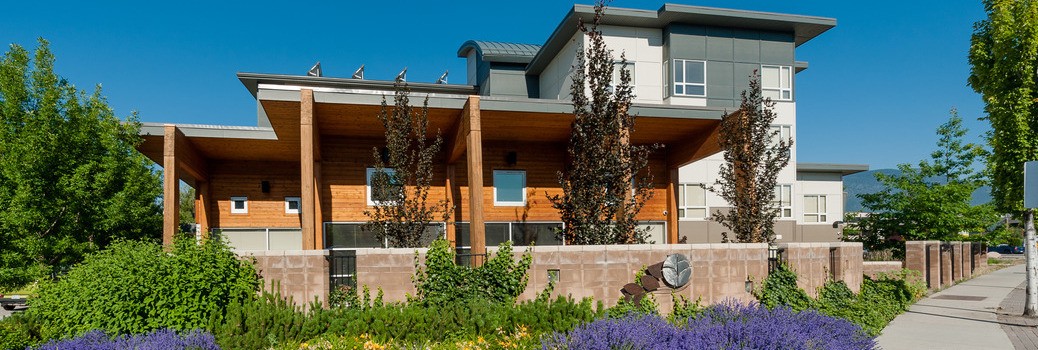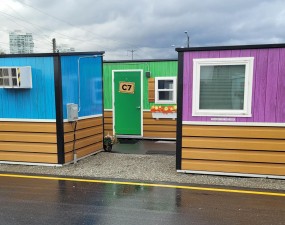Tackling the homelessness crisis: beyond the numbers
Topics
By Sue Wheeler | Aug 19, 2020
Homelessness is a crisis facing our community and communities across the nation. Those experiencing homelessness are faced with a daily life and death struggle. The COVID-19 pandemic has exacerbated these struggles and health risks while further perpetuating inequalities for people experiencing, or at risk of experiencing, homelessness.
In response to the homelessness crisis, our community has made, and continues to make, major investments to develop solutions in order to ensure that everyone has a place to call home. Significant efforts include supporting the community-built and driven Journey Home Strategy and the establishment of the Central Okanagan Journey Home Society. In the community engagement leading up to the Journey Home Strategy, citizens of Kelowna made it clear that it is critical that this crisis be addressed with urgency and the solution focus it deserves. In fact, in our most recent Citizen Survey, Kelowna residents identified social issues and homelessness as top priorities. However, addressing homelessness must be fueled by an understanding that homelessness is a dynamic and rapidly changing issue. This includes recognizing that people experiencing homelessness are not a homogeneous group and addressing their housing needs will require gaining a deep understanding of the challenges and barriers experienced by each individual, as a unique person.
People are often surprised to learn that while our local shelters typically have approximately 200 beds (note that this is a pre-COVID-19 number and has been significantly reduced for safety and physical distancing requirements), over 2,000 unique individuals access the shelter system in a typical year. While the majority use the shelter system briefly, approximately 20 percent of shelter users are experiencing chronic homelessness, and these are the people that are often most visible within the community. Understanding the experience of homelessness on a person by person basis is key to making an impact.
Homelessness is a complex issue and addressing it requires a community to continually respond to the changing nature of the issue. This is why performance monitoring can be so challenging, and also why at the same time it is incredibly important. Because when some residents are living without homes, it doesn’t just affect their health and wellness, it impacts the wellness of the broader community. Accurate and detailed performance monitoring provides the data and evidence needed to evaluate how we are doing and helps us determine where to direct future investments and energy. It also informs stakeholders and the community on our progress. And as our most recent progress report shows, we are moving the needle in the right direction but there is still more work to do.
Through Council Priorities 2019 – 2022, City Council has embraced the key goal of the Journey Home Strategy –the elimination of chronic and episodic homelessness in Kelowna by 2024. To help achieve this, the strategy calls for the creation of 300 housing units with supports. The latest data shows that 231 units have been provided since late 2017, with another 87 units currently under development. So, through a concerted effort by our community and our partners, we will exceed the target of 300 units by 2021.
An important element of the work to eliminate homelessness is through Kelowna’s participation in Built for Zero Canada (BFZ) with the Canadian Alliance to End Homelessness and 33 other Canadian communities. Led by the Central Okanagan Journey Home Society, this approach is focused on using real-time, person-centered data to understand who is experiencing homelessness, where, why, and what their needs are. By gaining a clear understanding of how people flow in and out of homelessness in our community, we will be better positioned to plan for, and use, existing resources more effectively and efficiently.
Journey Home’s application of the Built for Zero approach is helping to create a more coordinated and efficient system to address homelessness. This system has already proven successful by allowing for a coordinated and collaborative COVID-19 response plan for people experiencing homelessness in our community. Over the long-term, this integration of information will inform the creation of statistical models to better predict future needs, giving us the information required to track changing trends and needs and to ultimately adjust services in response. In the short term we will use this data to more accurately predict how many shelter beds will be needed when winter arrives. Because homelessness is a changing and dynamic situation for many, it is difficult for communities to gain a solid understanding of the local situation and its needs. Built for Zero is changing that.
Eliminating chronic homelessness by 2024 is an ambitious goal but the Journey Home Strategy outlines that it is achievable. Determining the resources needed and providing them in the most efficient way possible is a start. However, there is a way that all community members can contribute to achieving this ambitious goal. Stigma and discrimination are at the root of homelessness, and we all have an opportunity to address this.
We hear it repeatedly from people who have experienced homelessness, that stigma is something that contributes to the already challenging and draining aspects of living without a home. The implications of stigma hold people back from progressing in their lives and create barriers to accessing the opportunities for housing and finding meaningful ways to contribute to community. Individually, we can all support change by learning to recognize how we may unintentionally contribute to stigma. Enhancing our own awareness will allow us to grow our own understanding and empathy for those in our community who are living without homes.
The data tells us that ensuring that everyone has adequate housing is more cost-effective in the long run than having people continue to live without stable housing. But it’s not enough to just open our wallets and build the housing units, we need to address and help minimize the emotional toll homelessness takes. Every citizen has an opportunity to make a difference by challenging our perceptions and opening our minds and our hearts to ensure that the everyone has the opportunity to fulfil the basic need of feeling accepted, included, and a part of a community.







